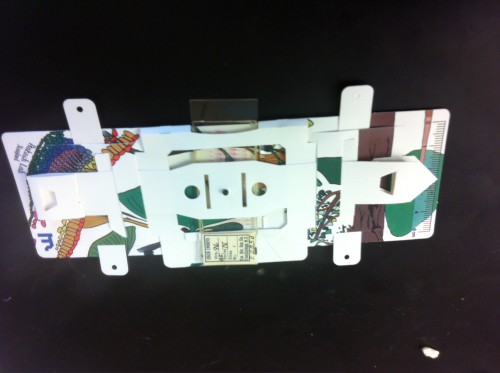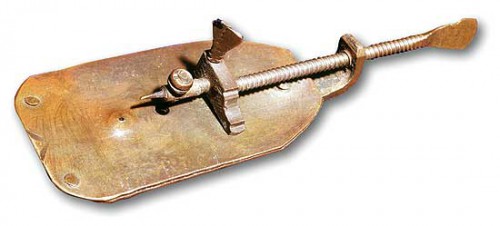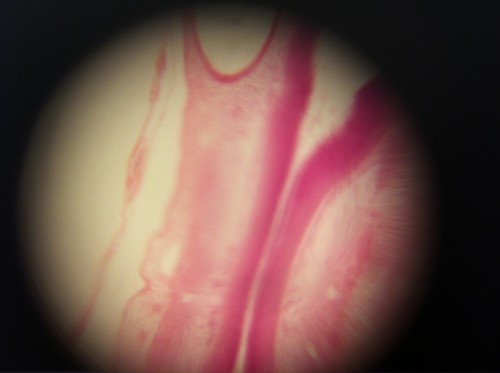I did! It was an origami microscope, with a single simple lens added. Here's what it looks like:
It's called a Foldscope, and I got it as part of a beta test program. It's a bit like the original Leeuwenhoek microscope, which you held up to your eye to see a magnified image.
The differences are that Leeuwenhoek used a drop of water to form a spherical lens; this comes equipped with a pre-printed lens. Leeuwenhoek used brass and little thumbscrews to move the specimen around; Foldscope comes on a sheet of thick paper, and you punch it out and fold it, and then move a slide around under the lens. Leeuwenhoek just aimed the back of his scope at a candle, or sunlight. You can do that with Foldscope, too, or it comes with a little LED source and battery that you can attach to the back. Leeuwenhoek did not have a cell phone camera, so he relied on his ability to draw what he saw. Now we can use magnets and double-stick tape to attach an iPhone to it.
Yes, I know. My iPhone costs a few hundred times what Foldscope does. Even more ironically, I was tinkering with Foldscope in my lab, next to a microscope that costs about 10,000 times more. Here's a quick photo I snapped of some prepared chick embryo slides I had.
It doesn't look like much, but this was taken two minutes after fumbling with the gadget. I saw much clearer images with my eye, but the combination of tinkering with my phone and the slide and the Foldscope was poorly practiced. Others are doing much better and are providing tips.
I can say that it's a better image than anything I saw with my old plastic microscope from Sears that I spent the whole of the summer of 1971 mowing lawns to pay for. It's a start. I'll have to practice more.
Apparently, these things only cost a dollar or so to make, so they have a lot of promise for citizen science, low income education projects, or field work. My $20,000 Leica is never leaving my lab bench, but this I can slip in my pocket and take anywhere, and you can imagine equipping a whole room full of kids, or mob of nerds at a SF convention, with these on the cheap.
So tell me, what would you imagine doing if you could get a bunch of microscopes for a dollar each?




Here's a website that describes how to build a $10 adapter that turns your smart phone into a microscope. Judging from the pictures included, it seems to work pretty well:
http://www.instructables.com/id/10-Smartphone-to-digital-microscope-con…
I'd take them to the nearest underfunded school.